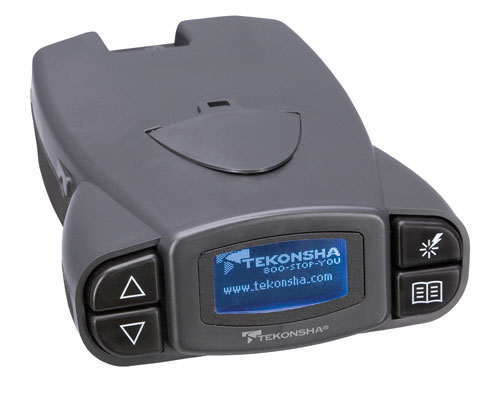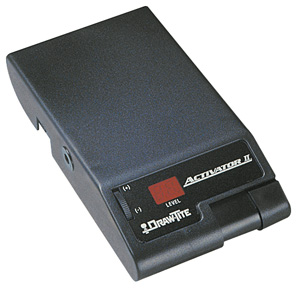Electronic Brake Controller Basics
Benjamin | Nov 02, 2011 | Comments 2
The Toyota Tundra is a capable tow vehicle right out of the box, but there are a number of aftermarket accessories out there that can help to make hauling a heavy load a less stressful and much safer experience. One such item is an electronic brake controller, a device which can improve your truck and trailer combination’s stopping power and help to maintain the stability of your tow rig.
 Tekonsha Proportional Brake Controller.
Tekonsha Proportional Brake Controller.
How A Brake Controller Works
At its simplest, a brake controller relays an electric signal to your trailer’s brakes when you stomp on your Tundra’s brake pedal. Over the years, manufacturers have been able to improve on the simple “on / off” application of a trailer’s braking system in order to offer much more comprehensive control over braking characteristics, varying the amount of braking pressure applied to its wheels as well as the rate at which it is doled out.
There are several different types of electronic brake controllers currently available on the market:
- Proportional Brake Controller. This type of design is capable of detecting amount of braking force being applied by the driver in the tow vehicle, thanks to a “pendulum” or inertia circuit that can sense how rapidly the truck and trailer are slowing down. It then uses this information to apply the trailer’s brakes to match that amount of force, meaning that the trailer won’t act as an anchor by locking up its brakes under gentle deceleration but can still provide maximum braking action in the event of a panic stop. The braking feel provided by a proportional controller also has the advantage of being fairly linear and natural. Examples of proportional brake controllers include the Curt Reflex controller (about $100) and the Valley Odyssey controller (about $150).

Draw Tite Time Delay Brake Controller.
- Time Delayed Brake Controller. A time delayed controller relies on the driver entering two important settings into the device: the weight of the trailer and the “sync.” When the brake is depressed inside the truck’s cab, a time delayed controller gradually ramps up the amount of braking performed by the trailer’s stoppers over a specific period of time until they reach their maximum power. This period is related to the weight of the trailer, and can be adjusted via the “sync” feature which can bring maximum braking on sooner or later. Once set, the time delay between some braking and all braking is the same regardless of how hard the pedal is pushed by the driver. Examples of time-delayed controllers include the Curt Venturer (about $50 or less) and the Curt Discovery (about $75)
There are a number of different takes on each of the above basic designs. For example, some proportional controllers do away with the need for a pendulum circuit and instead monitor the pressure in your truck’s brake lines to determine how much stopping power to apply. This makes them simpler to mount and much smaller in size.
Which Electronic Brake Controller Type Is Best?
Time delayed brake controllers are often cheaper and easier to install than proportional controllers, many of which must be mounted at a specific angle in order to properly detect trailer deceleration. On the other hand, proportional controllers offer less brake wear over time because of their ability to vary brake force according to conditions, and they can also offer full stopping power instantly should an emergency situation present itself.
Ultimately, the topography of the areas you will find yourself most often towing through, as well as the weight of your load will help you determine whether you need to pay a bit more for the progressive braking force of a proportional controller or instead opt for a simple, time delay-based design. Heavier trailers that have a tendency to eat brakes would most likely benefit from an extra investment up front in a proportional unit, while smaller hobby trailers can get by with an inexpensive time delay controller.
Related Posts
- After Market Brake Pads For Trucks and Towing
- CURT Venturer Brake Controller
- Toyota Tundra Brake Kit Reviews
Search terms people used to find this page:
- tundraheadquarters
Filed Under: Tundra Towing


I think it bears mentioning that in nearly every state there are laws regarding trailer brakes. There is generally a weight threshold, above which brakes are required, and depending on the state it can be as low as 1000# – 1500#. So a brake controller is not just a device of comfort and convenience, but rather it is mandatory towing equipment when the trailer has electric brakes.
BobG – Good point.